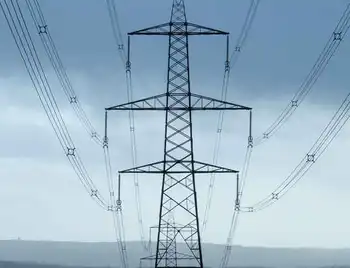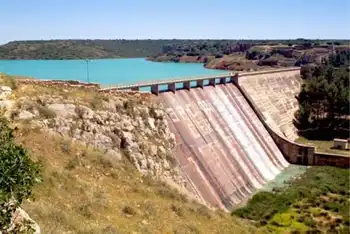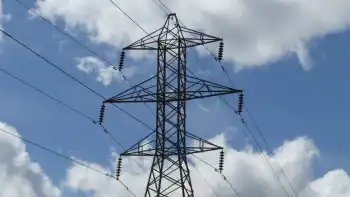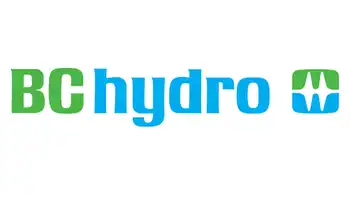How to grow a wind farm
This success is built on over 100 years of local development, starting in the late 1800s when pioneers first moved into North Central Oregon to establish farms. The Hilderbrand family, where Klondike I, in part, is located, settled the land in 1894 and has been farming it ever since.
By the late 1990s, the Hilderbrands and other local farmers were viewing the area's almost constant winds as a new opportunity. Wind power economics were turning positive, and, simultaneously, a nearby aluminum smelter was running short of electricity.
Events came to a head in 2000, when the Bonneville Power Administration (BPA) informed Golden Northwest Aluminum, Inc. that it could no longer meet contractual obligations to provide power to the smelter.
Instead, according to the Renewable Northwest Project, “BPA paid the aluminum smelter to cease operations, and the company used the capital to start Northwestern Wind Power (NWWP,) in an effort to help provide stable power to the smelter.”
A team from NWWP then joined Sherman County farmers and communities to explore wind farm development as an alternative to generate additional electricity for BPA and its customers.
The 1,784 residents of the county were receptive. Sherman County ranked at the bottom of OregonÂ’s 36 counties in earning power, with an average per capita income of about $17,500 at a time when the statewide average was about $28,000. Any opportunity to diversify and bolster local income sources was welcome.
“Sherman County needed new economic lifeblood,” Ormand Hilderbrand said. “Wind power was something we had all been thinking about for a long time, and it finally seemed like we could make it real. Environmentally, it also seemed the absolute right thing to do. My family became committed to wind power, and we remain so.”
Sherman County is a good place for a wind farm, with sustained wind speeds between 15.7 and 16.8 miles per hour. It is also well positioned relative to the high voltage electric grid stretching between the Columbia RiverÂ’s McNary Dam and population centers surrounding Portland to the west. BPA and Wasco Electric Co-op also have electricity substations nearby.
Jessie Casswell, an NWWP employee when Klondike I was being built, attributes early project success to good communication and cooperation between the developer and local residents. Landowners and community residents were kept in the loop and consulted for their ideas during planning and construction.
State government also swung into action. Oregon Governor John Kitzhaber started Oregon Solutions, a program he called “a collaborative process in which government, private interests and a local community can work as a team to address an issue and find a solution.”
An Environmental Site Assessment performed by WEST, Inc. revealed minimal environmental impacts. Historically, the proposed site was tilled cropland and, lacking trees and water sources, not well suited to avian life, nor was it a home to nesting raptors or migratory birds.
These activities, plus the strong desire of local farmers to see the project go forward, helped Klondike I go from conception to construction in only 12 months – a necessity due to the pending expiration of the federal government’s production tax credit on December 31, 2001.
"The on-again, off-again nature of federal programs and tax incentives is always a hindrance to this type of development," Hilderbrand said, "We knew we had to get this initial phase done quickly, or not at all."
The site was developed and, in 2002, NWWP negotiated a 20-year Power Purchase Agreement with the BPA to transmit the power from Klondike I onto the grid and into BPA's power marketing system.
In January 2003, PPM Energy (now Iberdrola Renewables), a power marketing company located in Portland, Ore. and owned by ScottishPower, purchased the wind project for $16.8 million.
Then, in 2004, due to the quality wind resource and a supportive local community, PPM developed Klondike II, 50 turbines yielding an additional 75 mw of generating capacity. Portland General Electric agreed to purchase the power from the additional turbines.
Klondike Project III came online in autumn, 2008, with 131 new General Electric 1.5 MW turbines, 44 Siemens 2.3 MW turbines and one Mitsubishi 2.4 mw turbine.
The 136 new turbines are capable of producing 300 mw of power, enough to power 80,000 homes.
In the first year of operation, Klondike I generated $321,205 in property tax revenue for Sherman County. That amounted to just over 10 percent of the county's total property tax revenue for the year. This phase of the project is expected to continue generating about $250,000 per year in property revenue over its 20 to 30 year life span. That money is spent on roads, schools, fire protection, health services and other direct benefits to local residents.
During construction phases of the project, local and surrounding area motels, RV parks, cafes, grocers and hardware stores all experienced a boost in business. This continues to some degree with a continuous stream of visitors to the site. On-going maintenance and technical jobs at the project also employ local people.
Additionally, the royalty payments to landowners tend to get spent in the local community, adding a multiplier effect to the revenue stream.
After the Klondike Wind Project initially took root on the Hilderbrand farm, the family decided to take a more active role in the wind-power generation business, starting their own family-owned, community-based wind project.
This is the story of that development, told by Ormand Hilderbrand, a businessman, farmer and agriculturalist with on-the-ground farm development experience in North Africa, the Middle East, Asia and elsewhere around the globe. His views are his own and not necessarily those of the Department of Energy.
"Our interest in wind power started in 1999," says Ormand Hilderbrand. "That's when we signed a wind farm development agreement with PPM Energy Producers on our family's farmland three miles east of Wasco.
"Five Klondike I turbines, and six Klondike II turbines, were erected on our land and are operating there today."
Hilderbrand said, "The decision to lease the land was pretty easy. Wind farm royalty payments on a negotiated wind production contract usually come to somewhere between $2,000 to $4,000 per year; that's for taking about one-half acre per turbine out of crop production.
"In contrast, gross revenue from a half-acre of wheat is about $75 per year. And the net from dryland wheat is so little I don't even want to think about it; it gives me a headache."
Hilderbrand continued, "In 2005, PPM released its unused development rights on our land back to us. That's when we decided to develop our own 10 mw, community wind farm.
"I think our experience in the intervening years makes a good study for anybody contemplating a similar move."
"Initially, we thought it would be a no-brainer to put up six or seven turbines and start generating and selling electricity.
"We had a Small Generator Interconnection Agreement with Bonneville Power Authority (BPA), plus a long-term, firm point-to-point transmission agreement. This is a major asset on a transmission-constrained grid.
"Additionally, the Oregon Public Utility Commission had earlier ruled that utilities must purchase electricity from small renewable generation facilities of 10 mw or less, based on the Public Utility Regulatory Policies Act of 1978 (PURPA) Avoided Cost Pricing. We had a Power Purchase Agreement with PPM to buy any electricity we generated.
"Also, the state of Oregon offered a Business Energy Tax Credit (BETC) equal to 50 percent of eligible project costs up to $10 million for renewable energy projects. Additionally, project owners could ‘pass-through’, or transfer, that 50-percent tax credit eligibility to a partner — in exchange for a lump-sum cash payment. The Oregon Department of Energy determined the rate used to calculate the cash payment.
"This was looking pretty good. So in early 2006, we went shopping for wind turbines. That was about the time the wind power market was picking up, so no manufacturer really even wanted to talk to us. An order of six or seven turbines was insignificant in an industry that, at the time, couldn't even keep up with demand from large, established customers at the time.
"Also, only a handful of banks would even lend money for wind projects — and Lehman, Wachovia, Wells Fargo and Goldman Sachs were not exactly falling over themselves to lend money to a couple of dirt farmers in Northern Oregon. To be a player we had to find an established equity partner.
"In 2006, we partnered with MMA Renewable Ventures (MMARV) out of its San Francisco office. MMARV is a national company set up specifically to coordinate financing, installation and operation of renewable energy projects. We thought we were set.
"Along comes January 2007, and everything falls apart again. The Oregon Department of Revenue issued a tax ruling that cut the value of the Oregon Department of Energy BETC to the ‘pass-through partner.’ So the value of that piece of our package suddenly went to $0.
"Fortunately, by working the Oregon state legislature, and with help from our elected representatives, we — working with others — were able to get the BETC reinstated. But by that time, nine more months had gone by. And, guess what, we had lost our place in the queue for wind turbines. Back to ‘Go’ and start over again.
"Fast forward to 2008. Everything is in place: finances, turbines scheduled for delivery, details such as getting FAA approval that the turbines won't interfere with long range radar 100 miles to the south or with our small local airport — all are done.
"Boom, September comes; Lehman folds, Wall Streets stops; money dries up — and — everybody is nervous that the federal production tax credits are not going to be renewed. Partners decide to hold off until the situation clarifies.
"It's now early 2009. MMARV is suddenly sold to another investor, Fotowatio S.A. of Madrid, Spain. The Oregon legislature's back in session and various interests are lobbying once again to end the BETC. Then BPA comes up with a plan to lump Small Generator Interconnection Agreements with Large Generator Interconnection Agreements, effectively increasing our yearly transmission fees to Bonneville by 400 percent — or, stating it another way, one-third of our projected gross revenue.
"Bottom-line," Hilderbrand said. "Private wind power development has cost us a lot of time, money, airplane miles and patience — and, here it is, 2009, and we still haven't erected our first turbine. Community scale wind power may be logical, but it's not easy — nor for the faint of heart."
Related News

More red ink at Manitoba Hydro as need for new power generation looms
WINNIPEG - Manitoba's NDP administration has declared its intention to formulate a strategy for financing new energy ventures, following a decision to halt the development of additional private-sector wind farms. This plan will accompany efforts to stabilize hydroelectric rates and manage the financial obligations of the province's state-operated energy company.
Finance Minister Adrien Sala, overseeing Manitoba Hydro, shared these insights during a legislative committee meeting on Thursday, emphasizing the government's desire for future energy expansions to remain under public ownership and expressing trust in Manitoba Hydro's governance to realize these goals.
This announcement was concurrent with Manitoba Hydro unveiling increased financial losses…




